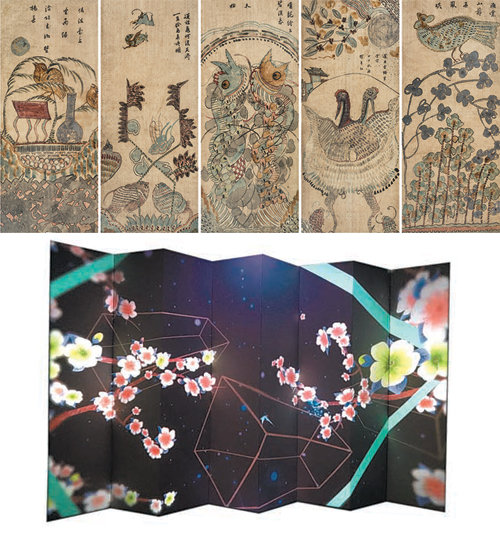‘Joseon’s folk painting ‘minhwa’ is noble art of the public,’ says a professor
‘Joseon’s folk painting ‘minhwa’ is noble art of the public,’ says a professor
Posted July. 03, 2018 08:25,
Updated July. 03, 2018 08:25

“Minhwa from the Joseon Dynasty are considered familiar to the general public, but you will recognize they are paintings widely misunderstood if you know them better,” said Prof. Goh Yeon-hee at Sungkyunkwan University’s Academy of East Asian Studies.
It is very true. Even a novice in artworks or cultural properties feels relaxed when they hear the word “folk paintings.” Perhaps they might consider folk paintings to be rather easy to embrace. To some extent, those paintings deeply reflect the lifestyle and living of the time. However, is this everything that folk paintings have to offer. The “Folk Paintings Encounter the Contemporary Era: Flower paintings of the Joseon Dynasty’ exhibition, which takes place at Gallery Hyundai from Wednesday, may give you a great chance to completely dispel prejudice that we have had against folk paintings.
According to Prof. Goh, a co-organizer of the exhibition, minhwa (folk painting) is a term that Muneyoshi Yanaki (1889-1961), a folk art researcher in Japan, used for the first time. He effectively elevated the stature of artworks that were collectively called “commonplace paintings” to an art genre that possesses a status of their own. For this reason, however, folk paintings, a broad culture that was enjoyed by both the upper class and working class people, were effectively confined to the image of “amateur art” and “paintings of all people.”
Some paintings are categorized as folk paintings of the 17th through 19th centuries, but certain paintings were painted obviously by royal painters. “Most customers of folk paintings in the 19th century were noblemen and upper-class people and those paintings would be used to decorate royal palaces and homes of distinguished families,” Prof. Goh said. “Those artworks freely adopted diverse materials and methods of expression, and as a result, artistic achievements of such works are even higher (than other paintings).”
Rediscovery of folk paintings are being highly sought after overseas as “K-Art” in recent years, as they are getting even more popular. Major U.S. art museums and media outlets have displayed significant interest in Korean folk paintings since 2016, while a fever is spreading to Korea as well.
“Folk paintings are gaining immense attention worldwide due to color hues and painting styles that are on par with contemporary paintings,” said a staff at Gallery Hyundai.
Yang-Hwan Jung ray@donga.com







